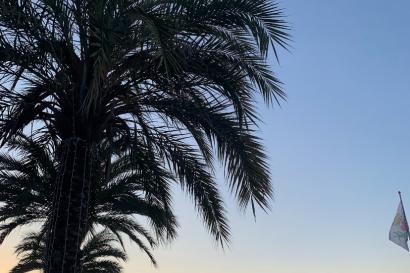If you have ever heard of, or taken a course about Sienese history, you should be familiar with the Palio. The Palio is an intense horse race between contradas, or neighborhoods, which occurs two times a year: once in July, and once in August. The Palio is held in the Piazza del Campo, and almost all of Siena's residents come view it live (about 50,000 people). Although there are seventeen contradas, only ten compete in each race for safety purposes. Before the Palio even begins, there are many ceremonies focusing on the chosen contradas, the horses, and the jockeys. The winner of the Palio receives a banner and bragging rights, but then has to pay for a lot of the Palio's expenseses. So in a way, it is financially better for a contrada to lose the Palio, but it is never viewed this way. This summer's Palios were historical because the Lupa, or She-wolf, contrada won both the July and the August races. This double winning has only happened once before. The Lupa contrada had been nick-named the "nonna," or "grandmother" contrada because they had not won a Palio in approximately twenty-seven years. So when the contrada won not one, but both Palios, the Lupa contrada went wild. They have been celebrating since July, and it is currenly September. I thought that the Super Bowl was huge, but it's nothing compared to the Palio. IES Abroad had a dinner where we were able to visit the Lupa's church and then go to one of the many contrada parties. The contrada party consisted of a lot of food, music and people proudly displaying the symbol of the Lupa. Contrada parties have an amazing sense of community pride and comradery.
I think that the most interesting part of the Palio is how the winner is determined. It does not matter if the jockey stays on the horse or not. The winner is declared by which horse crosses the finish line first. A jockey could be thrown off of the horse in the first second, but if the jockyless horse crosses the finish line first, then its contrada wins. To me, it seems as if the Palio is almost purely about the luck of the draw regarding the horse.
The Palio not only symbolizes Sienese pride, but it also symbolizes pride in one's contrada and nationality. The Palio has been a part of Siena's culture since Medieval times, and even today, it remains true to its historical origins.
Below are some photos of the Lupa's church and the contrada party.

Anna Bradley
<p>I am a current junior majoring in Psychology and minoring in Italian at Sewanee: The University of the South. I am a proud member of Kappa Delta sorority, and am a coxswain for Sewanee's crew team. In my free time, I enjoy kayaking, reading, going for runs, and playing with my dogs.</p>






